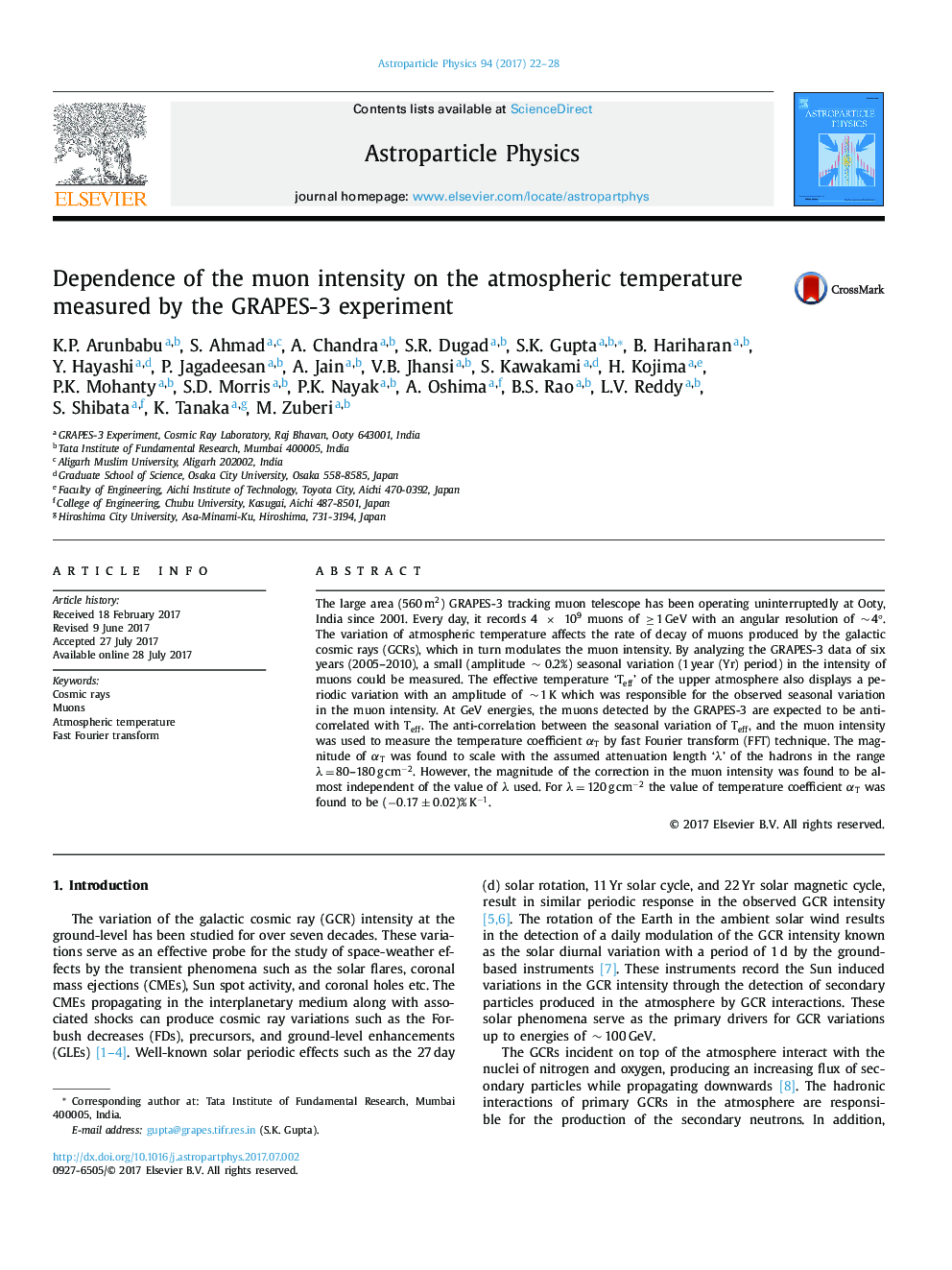| Article ID | Journal | Published Year | Pages | File Type |
|---|---|---|---|---|
| 5486710 | Astroparticle Physics | 2017 | 7 Pages |
Abstract
The large area (560â¯m2) GRAPES-3 tracking muon telescope has been operating uninterruptedly at Ooty, India since 2001. Every day, it records 4⯠â¯Ãâ¯â¯ 109 muons of â¯â¥â¯1â¯GeV with an angular resolution of â¯â¼â¯4°. The variation of atmospheric temperature affects the rate of decay of muons produced by the galactic cosmic rays (GCRs), which in turn modulates the muon intensity. By analyzing the GRAPES-3 data of six years (2005-2010), a small (amplitude â¯â¼â¯â¯0.2%) seasonal variation (1â¯year (Yr) period) in the intensity of muons could be measured. The effective temperature 'Teff' of the upper atmosphere also displays a periodic variation with an amplitude of â¯â¼â¯1â¯K which was responsible for the observed seasonal variation in the muon intensity. At GeV energies, the muons detected by the GRAPES-3 are expected to be anti-correlated with Teff. The anti-correlation between the seasonal variation of Teff, and the muon intensity was used to measure the temperature coefficient αT by fast Fourier transform (FFT) technique. The magnitude of αT was found to scale with the assumed attenuation length 'λ' of the hadrons in the range λâ¯=â¯80-180â¯gâ¯cmâ2. However, the magnitude of the correction in the muon intensity was found to be almost independent of the value of λ used. For λâ¯=â¯120â¯gâ¯cmâ2 the value of temperature coefficient αT was found to be (â0.17±0.02)%â¯Kâ1.
Related Topics
Physical Sciences and Engineering
Physics and Astronomy
Astronomy and Astrophysics
Authors
K.P. Arunbabu, S. Ahmad, A. Chandra, S.R. Dugad, S.K. Gupta, B. Hariharan, Y. Hayashi, P. Jagadeesan, A. Jain, V.B. Jhansi, S. Kawakami, H. Kojima, P.K. Mohanty, S.D. Morris, P.K. Nayak, A. Oshima, B.S. Rao, L.V. Reddy, M. Zuberi,
